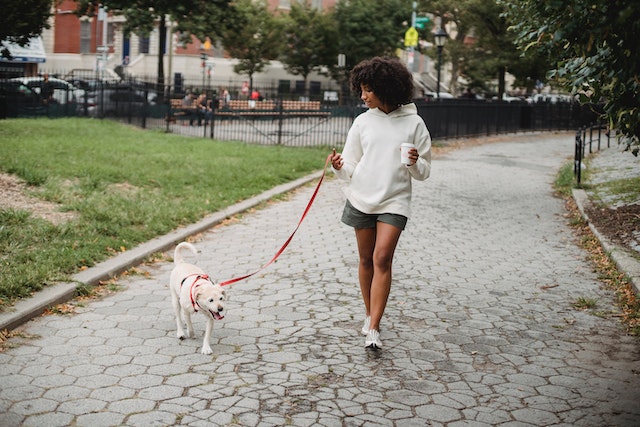Dog Poop Problem: New York Researchers Suggest to Leave Shoes Outside The Door
According to a study by researchers at New York’s Marymount College, there is a significant amount of dog poop bacteria on footwear and it can be tracked into homes, potentially causing health risks. The study was conducted by using sterile pipettes to collect samples from sidewalks and tape to collect samples from interior surfaces, which were then examined in the lab.
The study found that fecal bacteria was present on sidewalks and could be transferred to shoe soles, which in turn could be brought into homes. The density of bacteria decreased as samples were taken further into buildings, but was higher on carpets than on uncarpeted flooring.
The study suggests that people should consider leaving their outside shoes at the door to avoid tracking bacteria into their homes.
The study also comes as dog ownership in New York City has increased during the pandemic, leading to more fecal production and increased pressure on pet owners to clean up after their dogs.
How Harmful Can Fecal Bacteria Be?
Dog fecal bacteria can contain harmful pathogens that can cause illness in humans. Some of the risks associated with exposure to dog fecal bacteria include:
Gastrointestinal Illness: Exposure to fecal bacteria can lead to gastrointestinal illness, which can cause symptoms like diarrhea, vomiting, abdominal pain, and fever.
Salmonella: Salmonella is a type of bacteria that can be present in dog feces. Exposure to Salmonella can cause symptoms like fever, abdominal cramps, and diarrhea.
Campylobacter: Campylobacter is another type of bacteria that can be present in dog feces. Exposure to Campylobacter can cause symptoms like fever, diarrhea, and abdominal pain.
E. coli: E. coli is a type of bacteria that can also be present in dog feces. Exposure to E. coli can cause symptoms like diarrhea, abdominal pain, and vomiting.
Parasites: In addition to bacteria, dog feces can also contain parasites like roundworms and hookworms. Exposure to these parasites can cause symptoms like abdominal pain, diarrhea, and weight loss.
To reduce the risk of exposure to dog fecal bacteria, it’s essential to clean up after your dog and properly dispose of its waste. You should also avoid contact with dog feces and wash your hands thoroughly after handling dogs or their waste.
Additionally, leaving your outside shoes at the door can help reduce the risk of tracking bacteria into your home.
Be Responsible and Help Solve Dog Poop Problem
To solve the dog poop problem, it’s important for pet owners to take responsibility for their pets and clean up after them. Here are some strategies that can be effective:
Use Dog Waste Bags: Dog waste bags are a convenient and effective way to pick up your pet’s waste. Carry these bags with you whenever you take your dog out for a walk.
Find the Right Disposal Methods: Once you’ve picked up your dog’s waste, make sure to dispose of it properly. Some communities have dog waste stations that you can use to dispose of the waste, or you can take it home and dispose of it in your own trash.
Educate Pet Owners: Educating pet owners about the importance of cleaning up after their pets can help to reduce the amount of dog waste left on sidewalks and in public spaces.
Enforce Fines and Penalties: Local governments can enforce fines and penalties for pet owners who do not clean up after their pets. This can be an effective way to encourage pet owners to take responsibility for their pets.
Provide Dog Waste Bins: Providing dog waste bins in public spaces can make it easier for pet owners to dispose of their pets’ waste.
Increase Dog Park and Off-Leash Areas: Increasing the number of designated dog parks and off-leash areas can provide a safe and appropriate place for dogs to relieve themselves.
By taking a proactive approach to dog waste, pet owners and local communities can work together to solve the problem and create cleaner and healthier public spaces for everyone.
Tags










